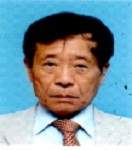
Masaru Matsuo
Dalian University of Technology, China
Title: Mechanical and electric properties of nanofiber - polymer composites under different electric fields
Biography
Biography: Masaru Matsuo
Abstract
Under external vibration, the damage of polymer-filler composites by Joule heat associated with tunneling current is thought to be serious than that by hot air. To elucidate it, the storage modulus for polyethylene (PE)-nickel coated carbon fiber (NiCF) composites and that for aromatic polyimide (PI)-vapor grown carbon fiber (VGCF) composites were measured as a function of frequency by the two heating methods. In common, the storage modulus of PE-NiCF decreased with increasing temperature and this tendency was considerable with decreasing frequency. However, the relative decrease of the modulus by Joule heat was more remarkable than that by hot air. This was due to the fact that the sample damage by Joule heat is associated with an increase in electron transfer in PE matrix at elevated temperature. Probably, it was postulated that electron transfer by tunneling effect between NiCFs caused partial discharge on PE surface and allowed appearance of pits and electron treeing, and finally the growth of the treeing wreaked electron breakdown. Such sample damage indicated that the electric field must be controlled to use as PTC materials like floor heating in winter season. In comparison with PE-NiCF, frequency dependence of the storage modulus for the PI-VGCF composite was not considerable against elevated temperature by Joule heat because of high heat resistance of rigid PI chains. Actually, the distance between adjacent VGCFs was independence of electric field because of no thermal expansion of PI. The phenomenon was analyzed in terms of theoretical calculation for thermal fluctuation-induced tunneling effect. The approach indicated that the increase in current is attributed to an increase in electron transfer area on VGCF surface and is independent of the distance between adjacent VGCFs.

